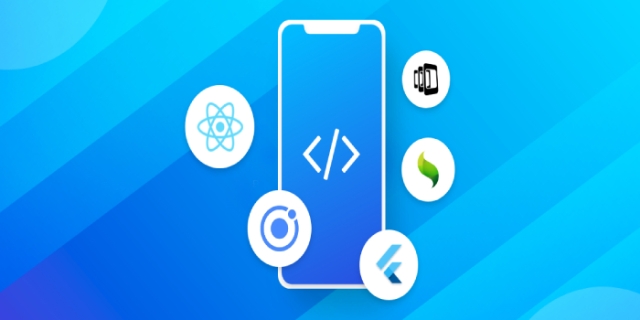Picking up the right development tools is important to build an engaging native-like app. When business firms look for building a mobile app, they simply opt for the cross-platform app development to get desired results. Startups find cross-platform a perfect tool to build an app on multiple platforms including Android, iOS, and Windows.

This technology helps developers to survive in the market with feature-rich and high performing mobile apps. In 2019, a 70 % hike is seen in mobile users and will be gaining more heights in 2020. The necessity of cross-platform app development will surpass the figure of $10 Billion in 2020. Seeing such a remarkable figure business will definitely invest in such a bright technology. Budgeting is always a point of concern for the businesses to develop native-like apps that’s why numerous options for cross platforms are available.
The benefits of cross-platform mobile development tools
To manage cross-platform environments is a risky affair but organizations have good reasons to choose them:
- A single App development company can build a mobile app regardless of the mobile device type.
- It is easier to integrate just one development tool, thus lowering the costs down.
- Most cross-platform tools are advancing at a rapid pace. Mobile apps are integrated with features like bar code scanning, image recognition, forms, data connection and text-voice.
Cross-platform development tools help developers to build apps that they can deliver quickly. This benefit is important for startups that lack the budget to build both Android and iOS mobile apps. Indeed, even big companies can execute smaller project development with cross-platform tools. These days, there are several cross-platform tools available to choose from, for both hybrid and native development, including the below-mentioned tools:
- React Native
React Native allows the creation of native applications with the use of JavaScript language. The strong side of React Native App Development is that modules can be written in languages such as C, Swift, and Java. It is unquestionably the best platform because it interprets your source code and converts it to the native elements in less time.
- Xamarin
Xamarin allows app development for different platforms including Windows, iOS, and Android using a single .net code. The best part is that all the apps built to feel like native apps and this is because it uses the native interfaces. Xamarin works on a single code by identifying it and accelerates the development work.
- Flutter
Flutter SDK allows developers to build high-performance applications on multiple platforms including iOS, Android, Web, and desktop with a single code. This open-source SDK is created & maintained by Google. Flutter is based on the Dart programming language and is easy to understand for JavaScript or Java developers. This platform is known for building very well known apps that are Google Ads, & Alibaba.
- Ionic
Ionic is one of the renowned SDK that mainly allows you to build native feeling mobile apps by utilizing the latest technologies like HTML, CSS, and JavaScript. This SDK mainly focuses on the look and UI of an app. The Android App development services use the Ionic framework to build apps for multiple platforms like Android, native iOS, and Desktop, with a single code base.
- PhoneGap
PhoneGap is owned by Adobe and is considered as one of the best cross-platform development tools to use in 2020. It’s based on the open-source framework Apache Cordova that gives you access to a complete set of PhoneGap toolset ultimately streamlining the app development process.
Wrapping Up
Today, businesses face tough competition and their main objective is to engage large audience. That’s why businesses need to take benefit of the cross-platform app development tools as possible. In the list of top 5 cross-platform development tools, you can find a tool that can perform all of your app development needs. This isn’t always a simple task to choose the best development tool because of multiple options present on the market.